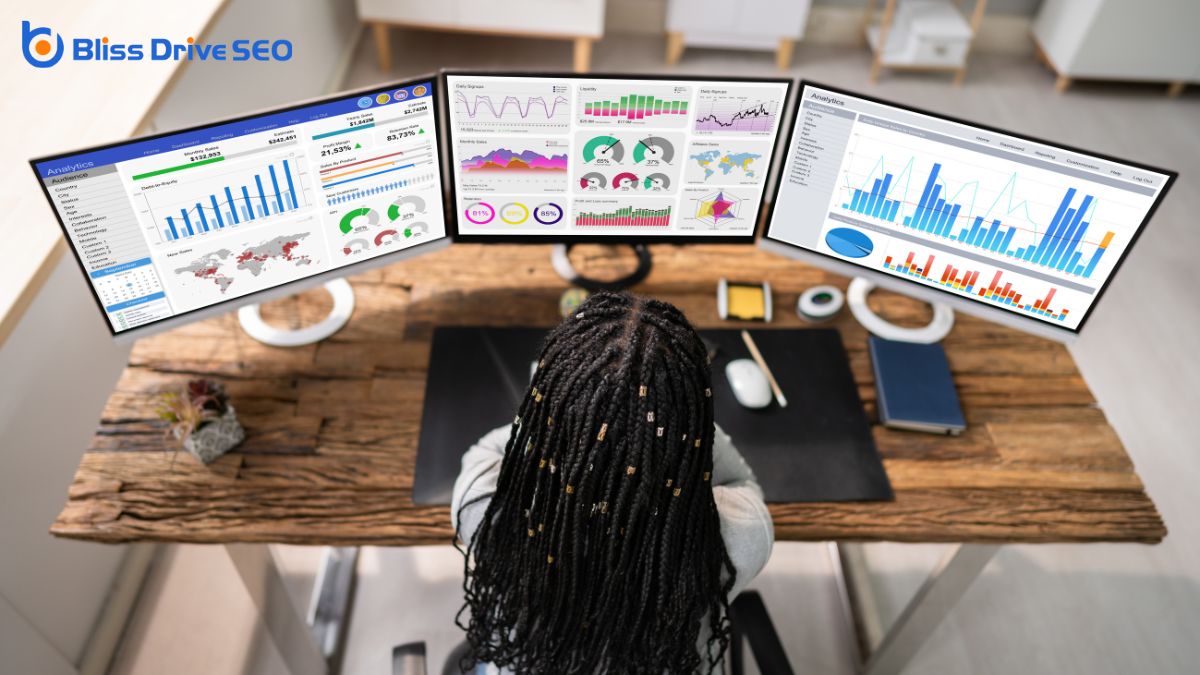Digital Marketing Services
Learn More About Us

You're probably wondering how to pinpoint the best conversion rateThe percentage of visitors who complete a desired action, such as making a purchase or filling out a... for your business. It all starts with understanding your current performance metricsKey indicators used to measure the effectiveness of affiliate marketing efforts, such as clicks, con... and setting realistic goals that align with your audience's expectations. You might think it's all about tweaking your website, but there's more to it than that. Have you considered how user experience and marketing strategies play a role? By utilizing analytical tools and engaging in continuous improvement, you can navigate this complex landscape. But what specific steps should you take to begin this journey? Let's explore the nuances that can transform your conversionThe completion of a desired action by a referred user, such as making a purchase or filling out a fo... rates.

Understanding conversion rates is essential for optimizing your marketing efforts and maximizing profits. By focusing on how well your website turns visitors into customers, you can make informed decisions that enhance your strategies.
A conversion rate is simply the percentage of visitors who complete a desired action, like making a purchase or signing up for a newsletterA regularly distributed email containing news, updates, and content relevant to subscribers.. To calculate it, divide the number of conversions by the total number of visitors, then multiply by 100. A higher conversion rate means your marketing strategies are effective in persuading visitors.
Keep in mind not all industries or campaigns should have the same conversion targets. Tailor your approach based on your unique business goals and audience behavior to release your marketing potential.
To boost your conversion rate, start by evaluating where your traffic is coming from and how it's performing.
Next, pinpoint any bottlenecks in your conversion process that slow down potential customers.
Finally, assess the effectiveness of your landing pages to guarantee they're engaging and aligned with user expectations.
How can you truly optimize your conversion rates without first evaluating your traffic sources? Understanding where your visitors come from is essential.
Different sources, such as social media, organic search, or paid ads, can bring varied audiences with unique behaviors. You need to assess which channels drive the most engaged traffic and which ones fall short.
Use analyticsThe systematic computational analysis of data or statistics to gain insights and support decision-ma... tools to explore metrics like bounce rateThe percentage of visitors who leave a website after viewing only one page., session duration, and pages per session for each source. This data helps you see patterns and figure out which traffic sources are worth investing more time and resources into.
When you're aiming to boost conversion rates, identifying conversion bottlenecks is essential.
Start by examining your user journey. Look for points where visitors drop off or hesitate. Use analytics tools to pinpoint these stages, such as high exit rates on specific pages. This data will help you understand where potential customers lose interest or face obstacles.
Consider engagement metricsMetrics that measure user interaction with a website, such as time on site and pages per session. like time on page and bounce rates to gain insights into user behavior. Pay attention to feedback from customers, reviews, or surveys, which can highlight pain points in their experience.
Don't overlook technical issues such as slow page loads or broken links. These bottlenecks can frustrate users and hinder conversions.
Although landing pages are critical to conversion success, their effectiveness often goes unexamined. To truly understand their impact, start by analyzing key metrics like bounce rate and time on page.
A high bounce rate might indicate that visitors aren't finding what they expect, while a short time on the page suggests your content isn't engaging enough. Explore heatmaps to see where users click most and understand their journey.
Are they scrolling or leaving too soon? A/B testing different elements, like headlines or call-to-action buttons, can reveal what drives engagementThe interactions that users have with a brand’s content on social media..
Don't forget mobile responsiveness; make certain your page looks great on all devices. Regularly reviewing these aspects will help you refine your landing pages, ultimately boosting your conversion rates.
Establishing realistic goals is essential to boosting your conversion rate, as it provides a clear roadmap and keeps your efforts focused. Start by analyzing your current metrics to understand what's achievable.
Don't aim for unrealistic numbers right away; incremental improvements often leadA potential customer referred by an affiliate who has shown interest in the product or service but h... to sustainable success. Break down larger goals into smaller, manageable tasks that align with your overall strategy. This approach makes progress measurable and less overwhelming.
Consider using the SMART framework—Specific, Measurable, Achievable, Relevant, and Time-bound—to set goals. For example, instead of saying, "I want more sales," specify the percentage increase you're targeting over a set period.
Regularly review and adjust your goals based on performance data. This guarantees they remain relevant and aligned with your evolving business landscape, keeping you on track.
To identify your target audience effectively, start by analyzing demographic insights like age, location, and income levels.
Next, pay attention to behavioral patterns to see what motivates your audience's actions.
Finally, use psychographic profiling techniques to understand their values, interests, and lifestyles, which will help tailor your approach.
Understanding your target audience is essential for optimizing your conversion rates. To truly connect with potential customers, immerse yourself in demographic insights analysis.
Start by gathering data on age, gender, income, education, and location. This information helps you paint a clear picture of who your audience is and what they value. Use tools like Google AnalyticsA web analytics service offered by Google that tracks and reports website traffic. or social media insights to collect this data efficiently.
Next, analyze the data to identify patterns. Are most of your customers young professionals or retirees? Do they reside in urban areas or rural settings?
These insights will guide your marketing strategies, ensuring they're tailored to resonate with the right people. Remember, the more specific your understanding, the more effectively you can engage and convert your audience.
When you plunge into behavioral pattern identification, you'll uncover how your audience interacts with your brand. It's crucial to observe the actions they take on your website, social media, and other platforms. Track metrics like click-through rates, time spent on pages, and navigation paths.
These insights help you understand what captures their attention and what doesn't. Look for trends in how they engage with content and identify any common behaviors or preferences.
Analyze purchasing habits and abandoned carts to see what might be causing friction. By pinpointing these behaviors, you can tailor your strategies to better meet their needs and increase conversions.
Understanding these patterns allows you to create a more personalized experience, ultimately guiding your audience to become loyal customers.
After exploring how your audience behaves, it's time to uncover the 'why' behind those actions through psychographic profiling techniques.
By understanding your audience's values, interests, and lifestyles, you gain insight into their motivations. Start by conducting surveys or interviews to gather qualitative data, revealing what truly matters to them.
Social media analysis can also uncover preferences and attitudes. Segment your audience based on shared characteristics like hobbies or beliefs. This helps you tailor your messaging to resonate deeply with each group.
Remember, it's about connecting on an emotional level. Use this information to craft personalized content that speaks directly to their desires and concerns.
Ultimately, understanding the 'why' empowers you to make informed decisions that boost your conversion rates effectively.
To truly enhance the user experience on your website, start by focusing on intuitive design and seamless navigation. Make certain your site is easy to use, with clear labels and paths that guide visitors naturally.
A clutter-free layout reduces frustration and keeps users engaged. Don't forget mobile responsiveness; many users browse on their phones. Quick loading speeds are essential, too—nobody likes waiting.
Listen to feedback. User surveys and session recordings can highlight pain points. Address these issues promptly.
Simplify forms, reduce steps, and eliminate unnecessary fields to make conversions smoother. PersonalizationTailoring content and offers to individual users based on their behavior, preferences, or demographi... can also enrich the user experience. Tailor content based on user behavior to make them feel valued.
When you prioritize user needs, you'll likely see improved satisfaction and higher conversion rates.
How do you know if your marketing strategies are truly effective?
Start by testing them. Create variations of your campaigns to see which resonates best with your audience. A/B testing is your go-to method.
Change one element at a time—like a headline or call-to-action—and compare results.
This way, you'll understand what drives engagement and conversions.

Once you've tested your marketing strategies, it's time to harness the power of analytical tools to make informed decisions. Start by using tools like Google Analytics to track website performance. You'll gain insights into visitor behavior, bounce rates, and conversion paths.
Explore heatmaps to visualize where visitors click, helping you understand which elements draw attention. Use A/B testing tools to compare variations and identify what resonates best with your audience.
Don't overlook social media analyticsThe process of gathering and analyzing data from social media platforms to inform business decisions..., as they reveal engagement and referral trafficVisitors who come to a website through an affiliate's promotional efforts.. Analyze email marketingThe use of email to promote products or services, build relationships with potential customers, and ... metrics to see open ratesThe percentage of recipients who open an email. and click-throughs.
Each tool offers valuable data, guiding you to optimize your approach. By leveraging these insights, you can refine your strategies, ensuring you maximize your conversion rate effectively.
Even after implementing analytical insights, the journey to optimizing conversion rates doesn't end there.
Continuous improvement methods are essential. Start by fostering a culture that embraces constant change. Regularly test and iterate on elements of your marketing and sales funnelAnother term for conversion funnel, focusing on the steps leading to a purchase.. Gather feedback from users to understand their experiences better. Don't forget to monitor industry trends and adapt accordingly.
Here's how you can start:
To find the best conversion rate, immerse yourself in your current metrics and set realistic goals that align with your business objectives. Understand your target audience and optimize their experience on your site. Test different marketing strategies using A/B testing to see what works best. Leverage analytical tools like Google Analytics to gain insights and track performance. Keep refining your approach based on data, ensuring continuous improvement and alignment with audience expectations for the best results.
